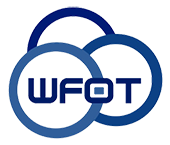Further research and applications in the field of ozone therapy: Much more than a "Therapeutic Unconventional Hypothesis".
Abstract
Ozone therapy is widely used in many countries since many years. Recently, the increasing widespread of this complementary therapy has been accomplished by an increased number of basic and clinic papers published on international journals. Many of the basic mechanisms of the ozone action are now well outlined. In addition, the modulation of interleukins and of some biochemical pathways related to inflammation and pain, indicates the rationale for its use in many pathological conditions related to pain, inflammation and age disorders. We will discuss on the mode of action of ozone that, with a hormetic mechanism, appear to be more similar to xenobiotic stress model than a pure pharmacological action. Indeed, our recent work in vivo on patients treated with major autohemo therapy (MAH) demonstrated the increase of Nrf2 level (P<0.01) in peripheral blood mononuclear cells (PBMC) immediately after exposition of blood to ozone and prior reinfusion. The activities of superoxide dismutase and catalase were increased (P<0.05) following the cycle of MAH’s. These data demonstrate by the first time in vivo the activation of the Nrf2 pathway by a low dose of ozone and the activation of the feedback mechanism that induces the synthesis of proteins which finally favours the cell survival. Following the above research on Nrf2, it is now in progress a new scientific approach in the aim to study the transcriptional profile by qRT-PCR of transcripts in both Nrf2- and NFkB-dependent genes to further define the profile of the positive effect induced by low ozone doses in many ailments in patients in vivo.
Keywords
ozone therapy; nuclear factor activation
References
Watson J. Type 2 diabetes as a redox disease. The Lancet. 2014;9919(383):841-843.
Mason HS, North JC, Vanneste M. Microsomal mixed-function oxidations: the metabolism of xenobiotics. Fed Proc. 1965;24(5):1172-1180.
Steven OS, Chun-Yang F, Ram R. Cellular Stress Response Pathway System as a Sentinel Ensemble in Toxicological Screening. Toxicol Sci. 2009;111(2):202-225.
Pecorelli A, Bocci V, Acquaviva A, Belmonte G, Gardi C, Virgili F, et al. NRF2 activation is involved in ozonated human serum upregulation of HO-1 in endothelial cells. Toxicol Appl Pharmacol. 2013 Feb;267(1):30-40. doi: 10.1016/j.taap.2012.12.001.
Re L, Martinez-Sanchez G, Bordicchia M, Malcangi G, Pocognoli A, Morales-Segura MA, et al. Is ozone pre-conditioning effect linked to Nrf2/EpRE activation pathway in vivo? A preliminary result. Eur J Pharmacol. 2014;742:158-62. doi: 10.1016/j.ejphar.2014.08.029.
Refbacks
- There are currently no refbacks.
 Journal of Ozone Therapy (JO3T)
Journal of Ozone Therapy (JO3T)
The Official Peer Reviewed Journal of the World Federation of Ozone Therapy (WFOT)
ISSN 2444-9865

![]() Journal of Ozone Therapy (JO3T)
Journal of Ozone Therapy (JO3T)